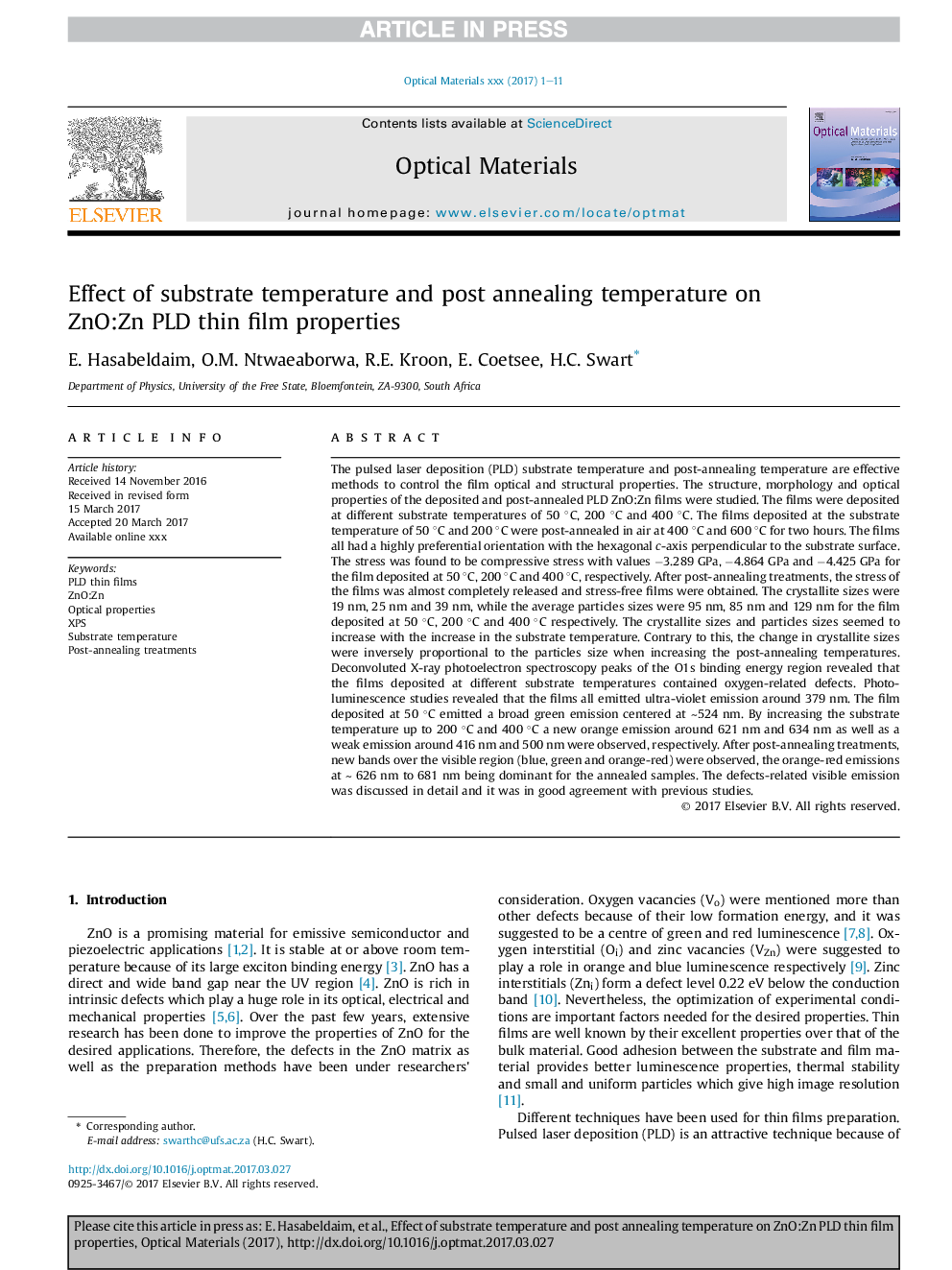| کد مقاله | کد نشریه | سال انتشار | مقاله انگلیسی | نسخه تمام متن |
|---|---|---|---|---|
| 7908004 | 1510760 | 2017 | 11 صفحه PDF | دانلود رایگان |
عنوان انگلیسی مقاله ISI
Effect of substrate temperature and post annealing temperature on ZnO:Zn PLD thin film properties
دانلود مقاله + سفارش ترجمه
دانلود مقاله ISI انگلیسی
رایگان برای ایرانیان
کلمات کلیدی
موضوعات مرتبط
مهندسی و علوم پایه
مهندسی مواد
سرامیک و کامپوزیت
پیش نمایش صفحه اول مقاله

چکیده انگلیسی
The pulsed laser deposition (PLD) substrate temperature and post-annealing temperature are effective methods to control the film optical and structural properties. The structure, morphology and optical properties of the deposited and post-annealed PLD ZnO:Zn films were studied. The films were deposited at different substrate temperatures of 50 °C, 200 °C and 400 °C. The films deposited at the substrate temperature of 50 °C and 200 °C were post-annealed in air at 400 °C and 600 °C for two hours. The films all had a highly preferential orientation with the hexagonal c-axis perpendicular to the substrate surface. The stress was found to be compressive stress with values â3.289 GPa, â4.864 GPa and â4.425 GPa for the film deposited at 50 °C, 200 °C and 400 °C, respectively. After post-annealing treatments, the stress of the films was almost completely released and stress-free films were obtained. The crystallite sizes were 19 nm, 25 nm and 39 nm, while the average particles sizes were 95 nm, 85 nm and 129 nm for the film deposited at 50 °C, 200 °C and 400 °C respectively. The crystallite sizes and particles sizes seemed to increase with the increase in the substrate temperature. Contrary to this, the change in crystallite sizes were inversely proportional to the particles size when increasing the post-annealing temperatures. Deconvoluted X-ray photoelectron spectroscopy peaks of the O1s binding energy region revealed that the films deposited at different substrate temperatures contained oxygen-related defects. Photoluminescence studies revealed that the films all emitted ultra-violet emission around 379 nm. The film deposited at 50 °C emitted a broad green emission centered at â¼524 nm. By increasing the substrate temperature up to 200 °C and 400 °C a new orange emission around 621 nm and 634 nm as well as a weak emission around 416 nm and 500 nm were observed, respectively. After post-annealing treatments, new bands over the visible region (blue, green and orange-red) were observed, the orange-red emissions at â¼Â 626 nm to 681 nm being dominant for the annealed samples. The defects-related visible emission was discussed in detail and it was in good agreement with previous studies.
ناشر
Database: Elsevier - ScienceDirect (ساینس دایرکت)
Journal: Optical Materials - Volume 74, December 2017, Pages 139-149
Journal: Optical Materials - Volume 74, December 2017, Pages 139-149
نویسندگان
E. Hasabeldaim, O.M. Ntwaeaborwa, R.E. Kroon, E. Coetsee, H.C. Swart,